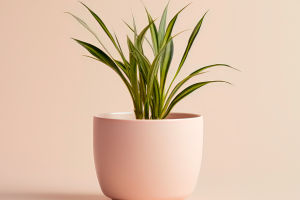Cherry blossoms are a symbol of spring, with various species offering unique characteristics in terms of blooming period, flower shape, and tree form.
Below are introductions to six prominent cherry blossom varieties.
1. Yoshino Cherry
Yoshino cherry is one of the most iconic cherry blossom varieties in Japan, originating from the Edo period in Tokyo’s Somei Village and now widely planted worldwide. It typically blooms from late March to early April, with a brief yet spectacular bloom.
The five-petaled flowers are pale pink to nearly white, gradually lightening as the bloom progresses. Yoshino trees are tall with umbrella-shaped crowns, making them ideal for large-scale planting, especially in parks and along rivers, creating breathtaking scenes like seas of white.
2. Yaebeni Shidare Cherry
Yaebeni Shidare is renowned for its weeping branches and multi-layered blossoms, belonging to the Yaezakura group. It blooms around mid-April, with richly layered petals ranging from deep pink to light red.
The flowers grow in clusters at the tips of the drooping branches, resembling waterfalls of pink. Its slender, cascading branches lend the tree a graceful and elegant appearance, making it a stunning focal point in gardens and landscapes.
3. Kawazu-zakura
Kawazu-zakura is a representative of early-blooming cherry blossoms, favored for its early flowering period, which typically spans from February to early March.
Its single-petaled flowers are a vivid deep pink, larger and denser than many other varieties, making them highly noticeable. The tree’s compact form makes it suitable for small spaces, and its early bloom is often considered a herald of spring, adding a touch of warmth to the tail end of winter.
4. Oshima Cherry
Oshima cherry is a native species commonly found in Japan’s Kanto region, particularly in the Oshima area. It usually blooms from late March to early April, with large, fragrant white flowers.
Oshima trees are tall and upright, with broad leaves that appear alongside the blossoms. The leaves of the Oshima cherry are also used in making Japanese confectionery, “sakura mochi,” adding both ornamental and practical value to this species.
5. Kanzan Cherry
Kanzan cherry is a type of yaezakura, known for its lavish, multi-layered flowers that bloom in clusters. Its blossoms, which typically open from mid-April to early May, feature 20 to 50 petals per flower, with a rich pink hue.
The densely packed flowers resemble blooming balls, making them visually striking. Kanzan trees are shorter but have sturdy branches, often planted in gardens or lining streets. As one of the latest-blooming varieties, Kanzan cherry brings vibrant color to the final stages of spring’s cherry blossom season.
6. Gyoiko Cherry
Gyoiko stands out for its rare greenish flowers, a feature that has garnered much attention. The name “Gyoiko” comes from the green garments worn by ancient Japanese nobility. It typically blooms from late April to early May, with its unique yellow-green petals gradually turning pale pink as the bloom progresses.
With a medium-sized tree form, Gyoiko is suitable for smaller garden spaces. Its distinct coloring draws many cherry blossom enthusiasts, offering a refreshing contrast to the typical pink varieties.
From the early Kawazu-zakura to the late-blooming Gyoiko, cherry blossoms bring endless visual delight throughout different seasons, symbolizing the beauty of spring and the wonder of nature. Whether in Japan or at cherry blossom festivals around the world, these varieties contribute to the vibrant tapestry of springtime with their unique appearances and characteristics.


